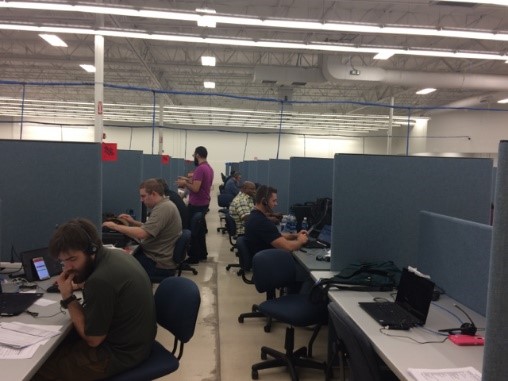With parts of Texas and Florida still reeling from the devastation of Hurricanes Harvey and Irma, thousands of Americans have lost their homes, their communities, and are wondering how to rebuild their lives. These people need help, starting with immediate needs like getting electricity back on and putting food on the table. In the weeks to come, they will also need help determining where to live and how to return to a sense of normalcy.

Science and Technology
William Bryan
Previous catastrophic natural disasters, like Hurricane Katrina and Super Storm Sandy, demonstrated the need for a large volunteer force that could augment DHS’s Federal Emergency Management Agency (FEMA) to help bring back that normalcy. That’s how the DHS Surge Capacity Force (SCF) got started. Today, more than 6,500 volunteers from across DHS have signed up, all willing to be called at a moment’s notice to provide support anywhere in the country. This month, that call came. I am extremely proud to say that Science and Technology Directorate staff are in Texas and Florida, jumping in wherever they are needed to assist with response and recovery efforts.
Their responsibilities span the full range of post-disaster operations. Some staff are walking door-to-door, bringing supplies and asking about resources needed for specific neighborhoods. They are helping people in shelters find long-term housing. Some are in call centers, directing responders to people who need rescuing or emergency assistance, answering questions about the recovery efforts, where to find resources like water, food, and shelter, and helping people navigate paperwork for disaster assistance programs. Some use their technical skills, helping set up living and working spaces. For example, one of S&T’s volunteers helped turn an empty 100,000 square foot warehouse into usable space for more than 900 volunteers. Th
and asking about resources needed for specific neighborhoods. They are helping people in shelters find long-term housing. Some are in call centers, directing responders to people who need rescuing or emergency assistance, answering questions about the recovery efforts, where to find resources like water, food, and shelter, and helping people navigate paperwork for disaster assistance programs. Some use their technical skills, helping set up living and working spaces. For example, one of S&T’s volunteers helped turn an empty 100,000 square foot warehouse into usable space for more than 900 volunteers. Th eir help running cables and setting up facilities means FEMA can better respond to the tens of thousands of claims, providing assistance to survivors and ensuring more SCF volunteers can get to work when they arrive, ready to lend a hand.
eir help running cables and setting up facilities means FEMA can better respond to the tens of thousands of claims, providing assistance to survivors and ensuring more SCF volunteers can get to work when they arrive, ready to lend a hand.
I want to thank S&T’s volunteers and all those from DHS and other organizations who have put their lives on hold so they could help their fellow man. As more people continue to volunteer and deploy through SCF, I encourage you to find ways to support the recovery efforts. Together, we can help those who have lost so much to these disasters begin to get their lives back on track.
